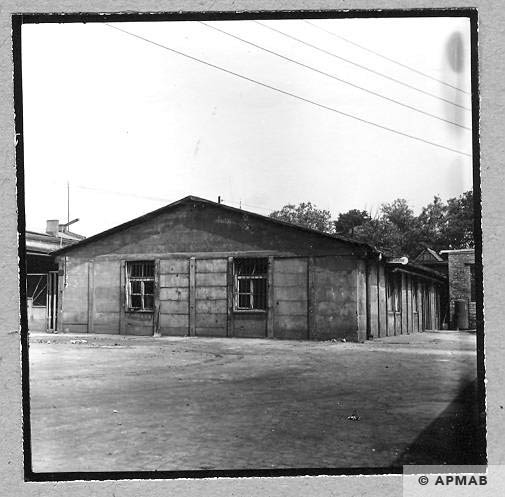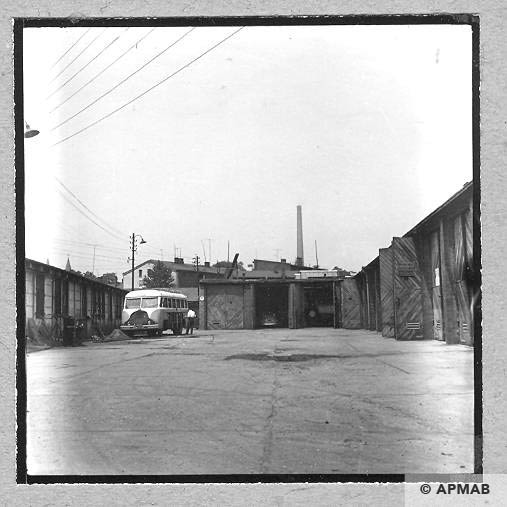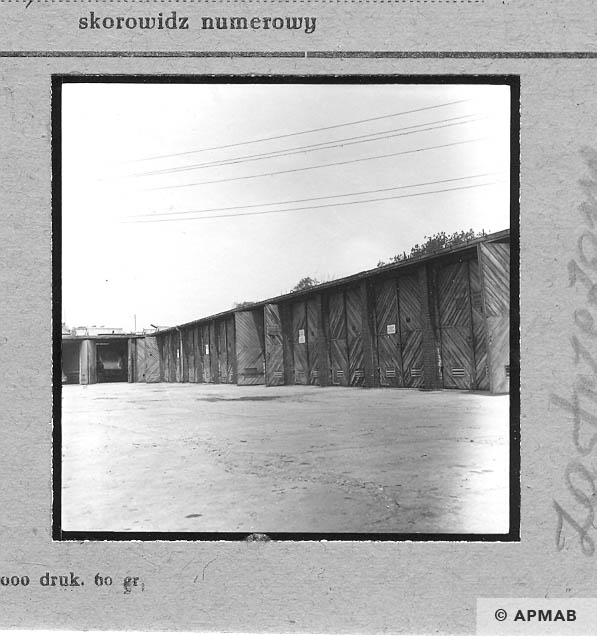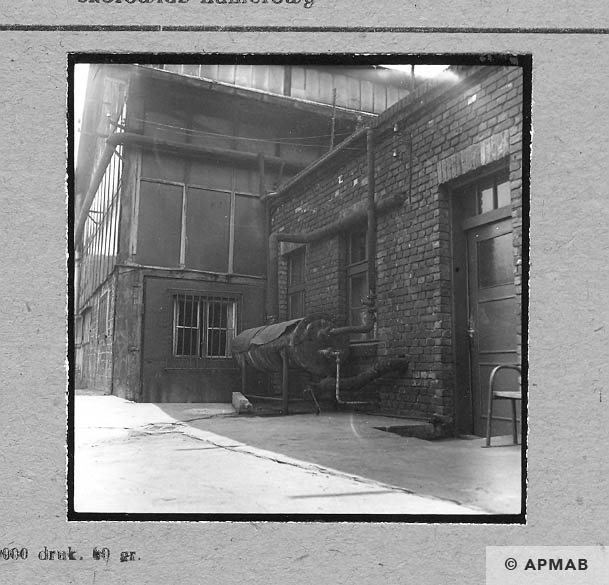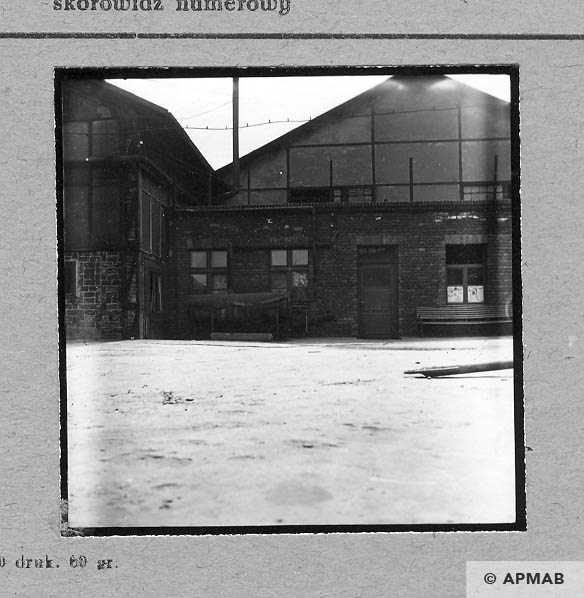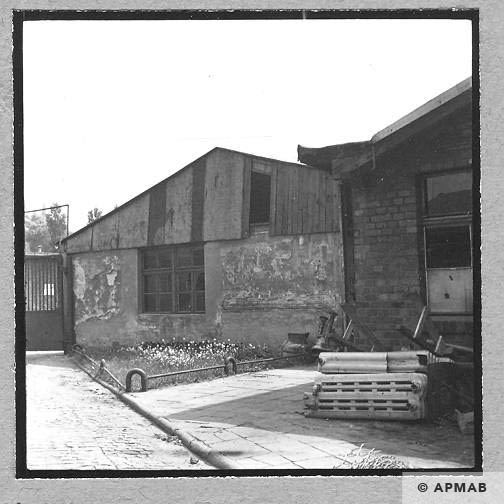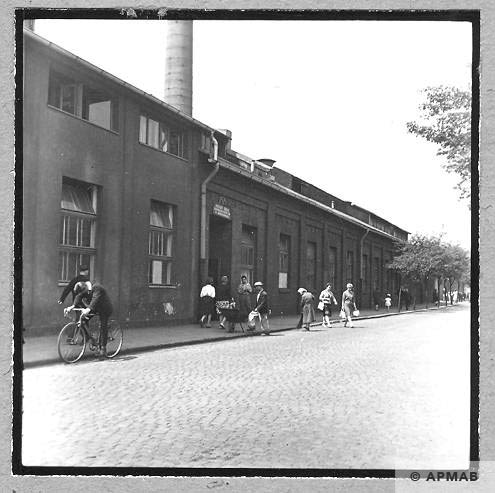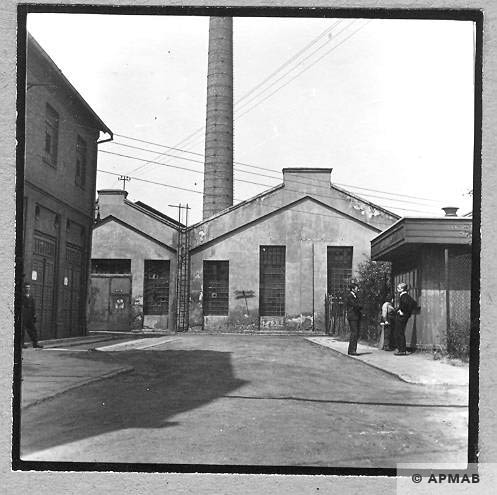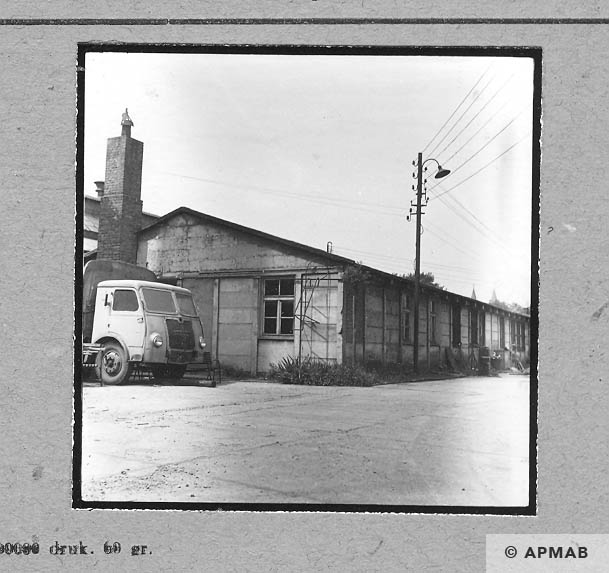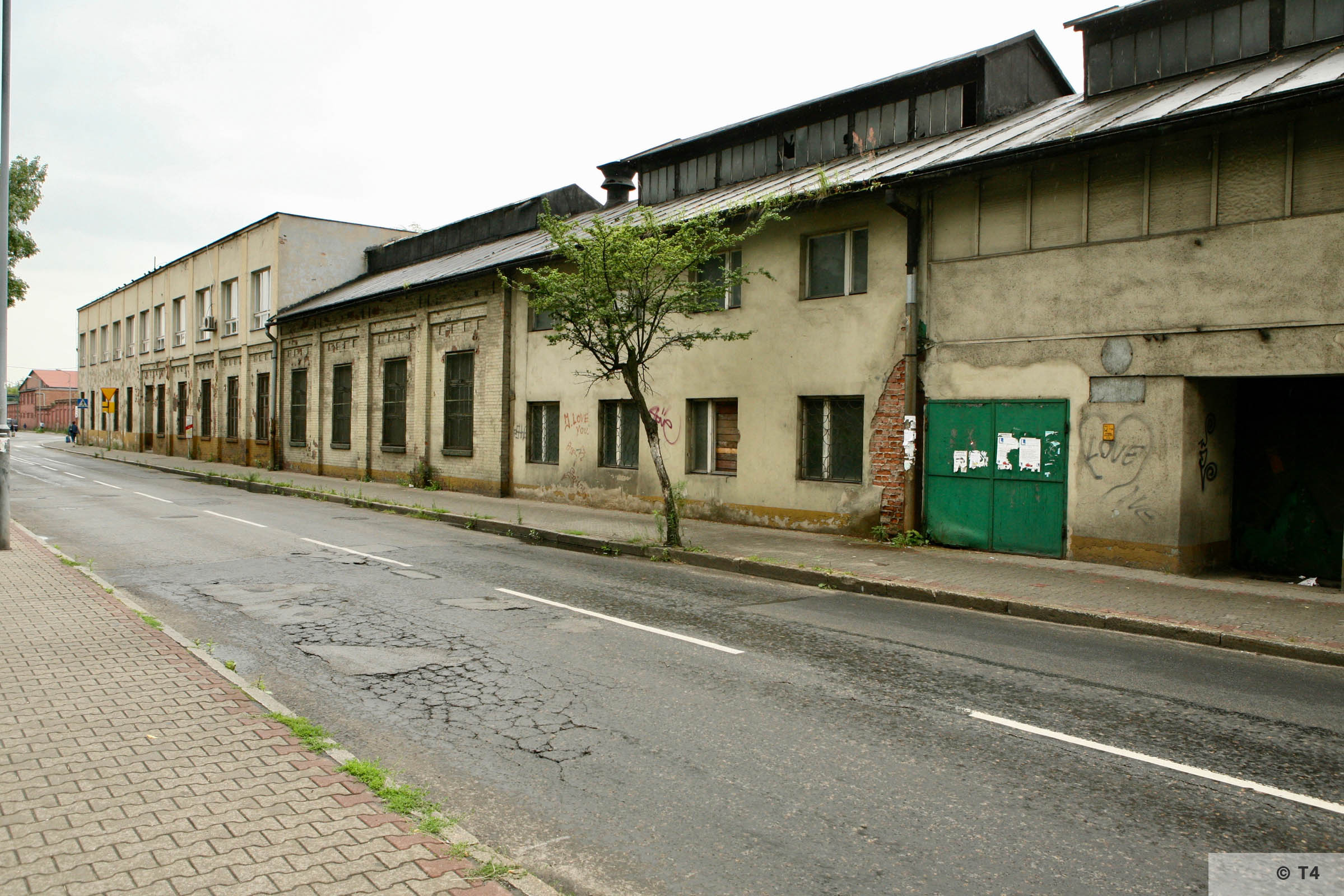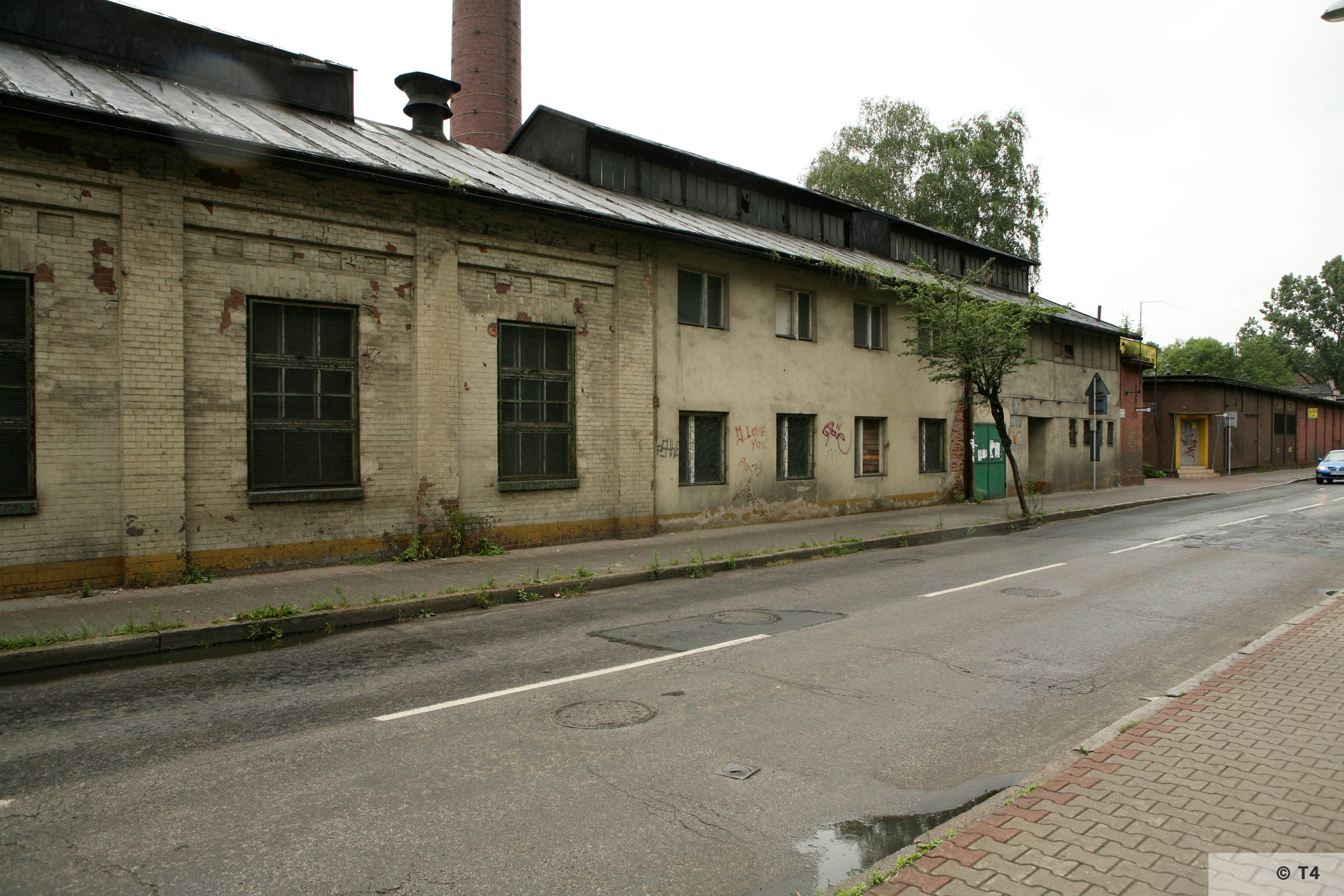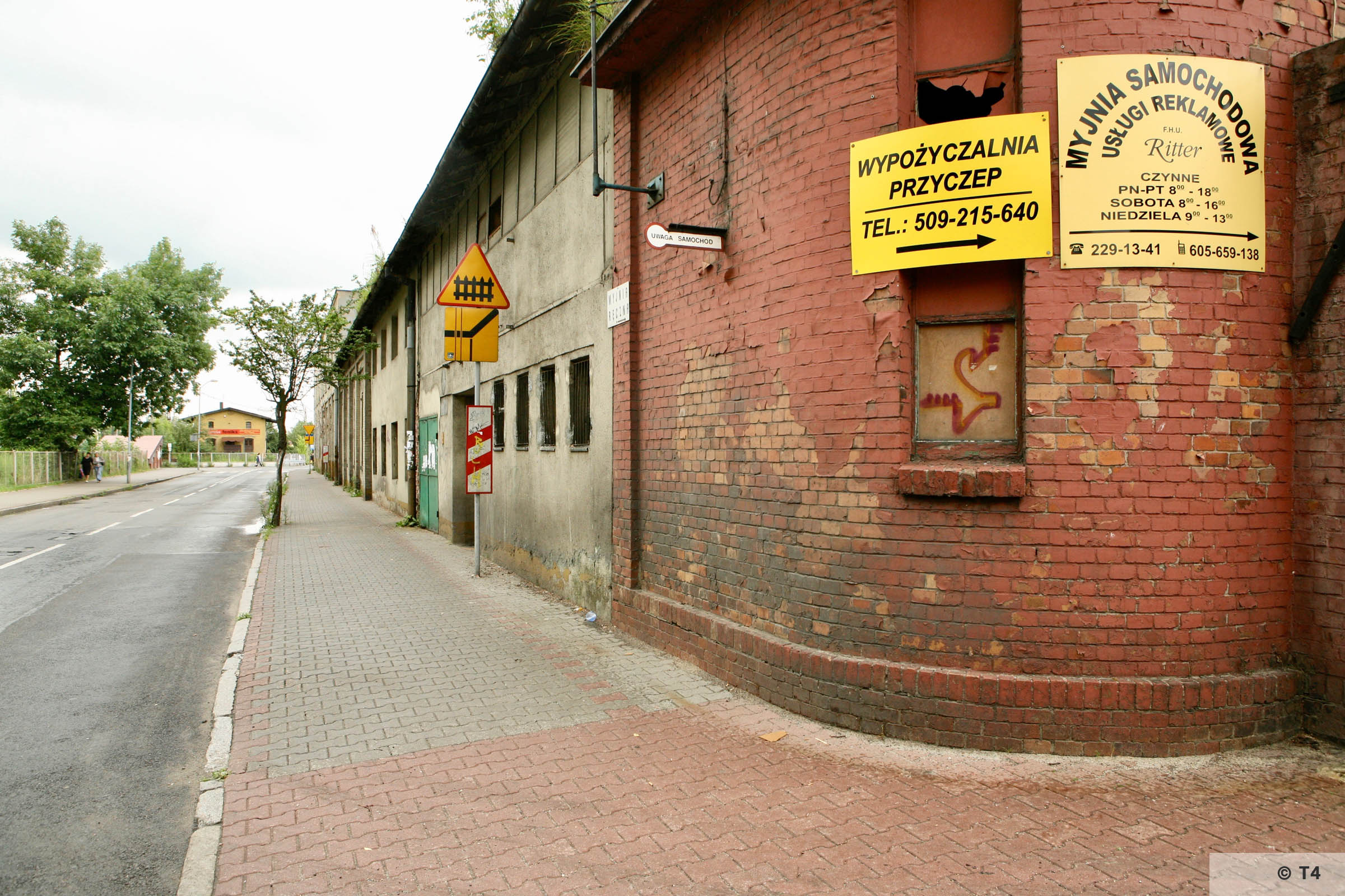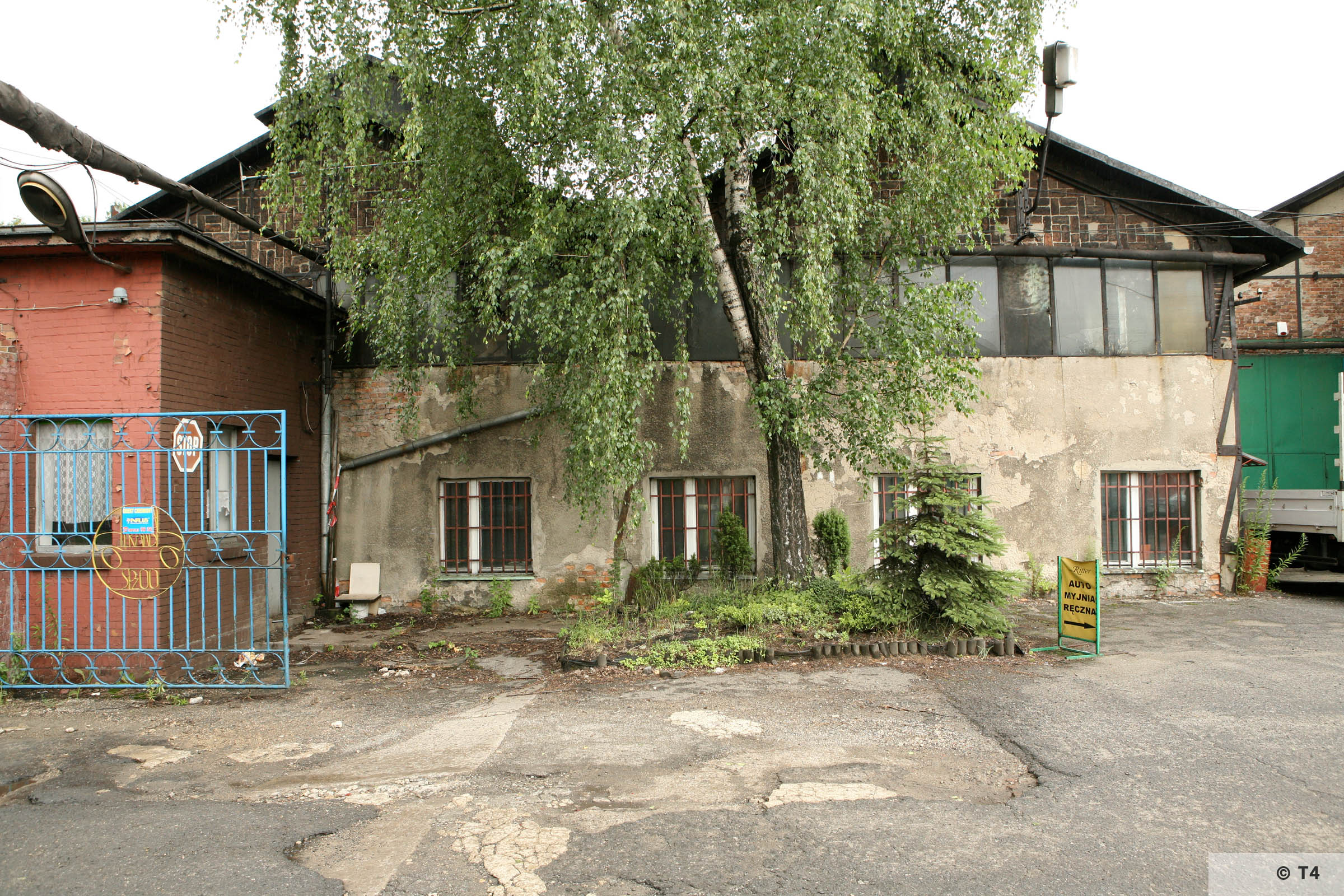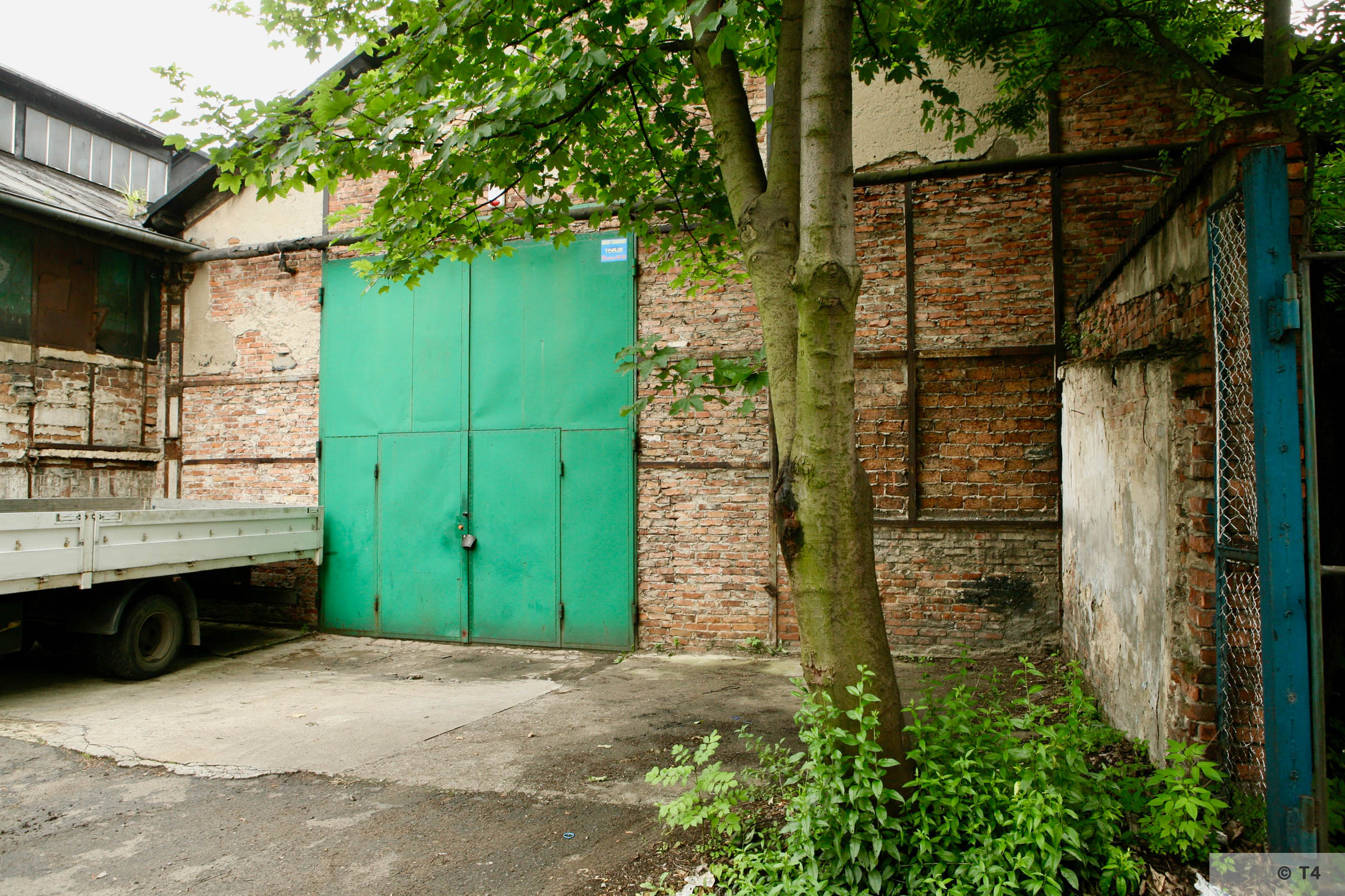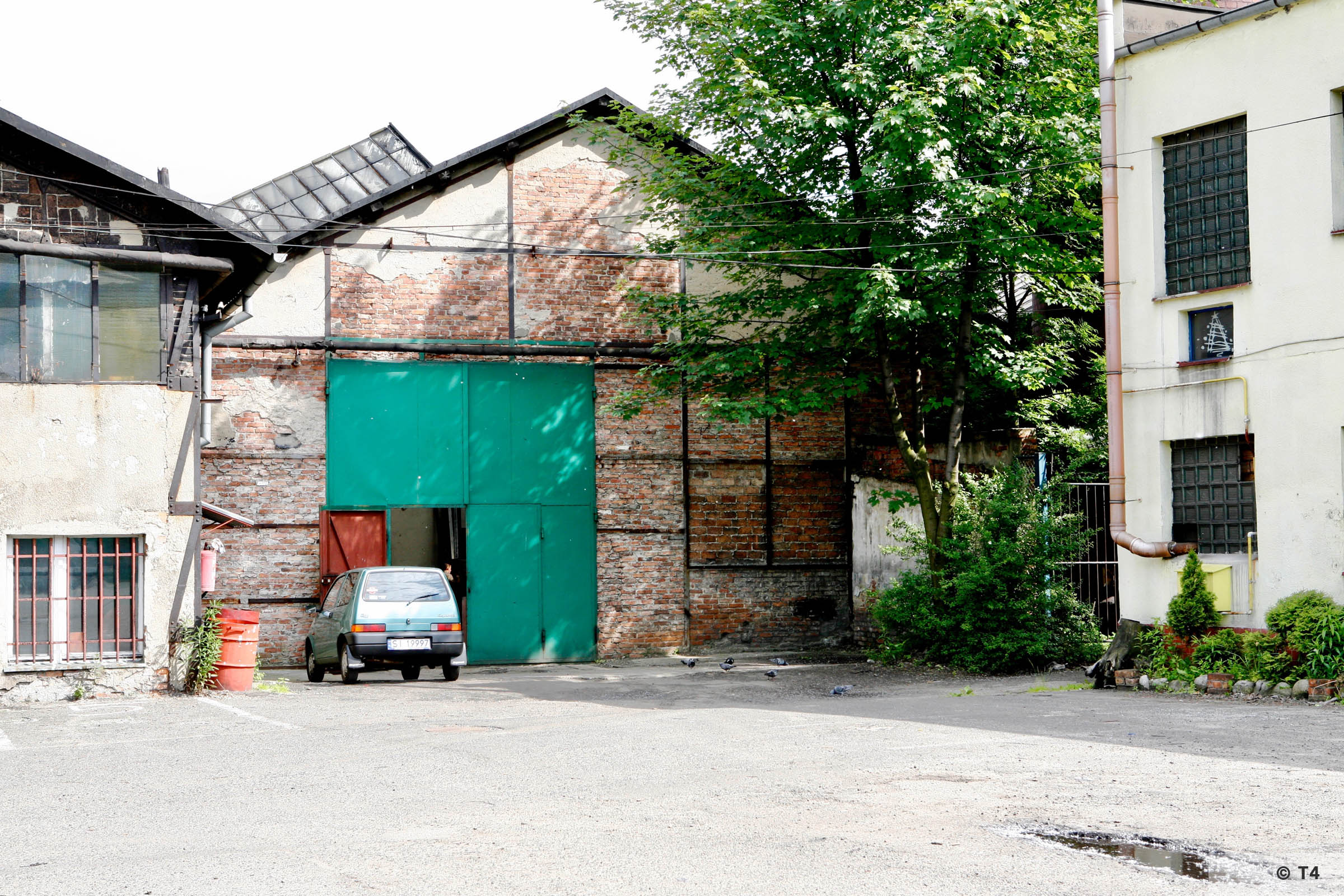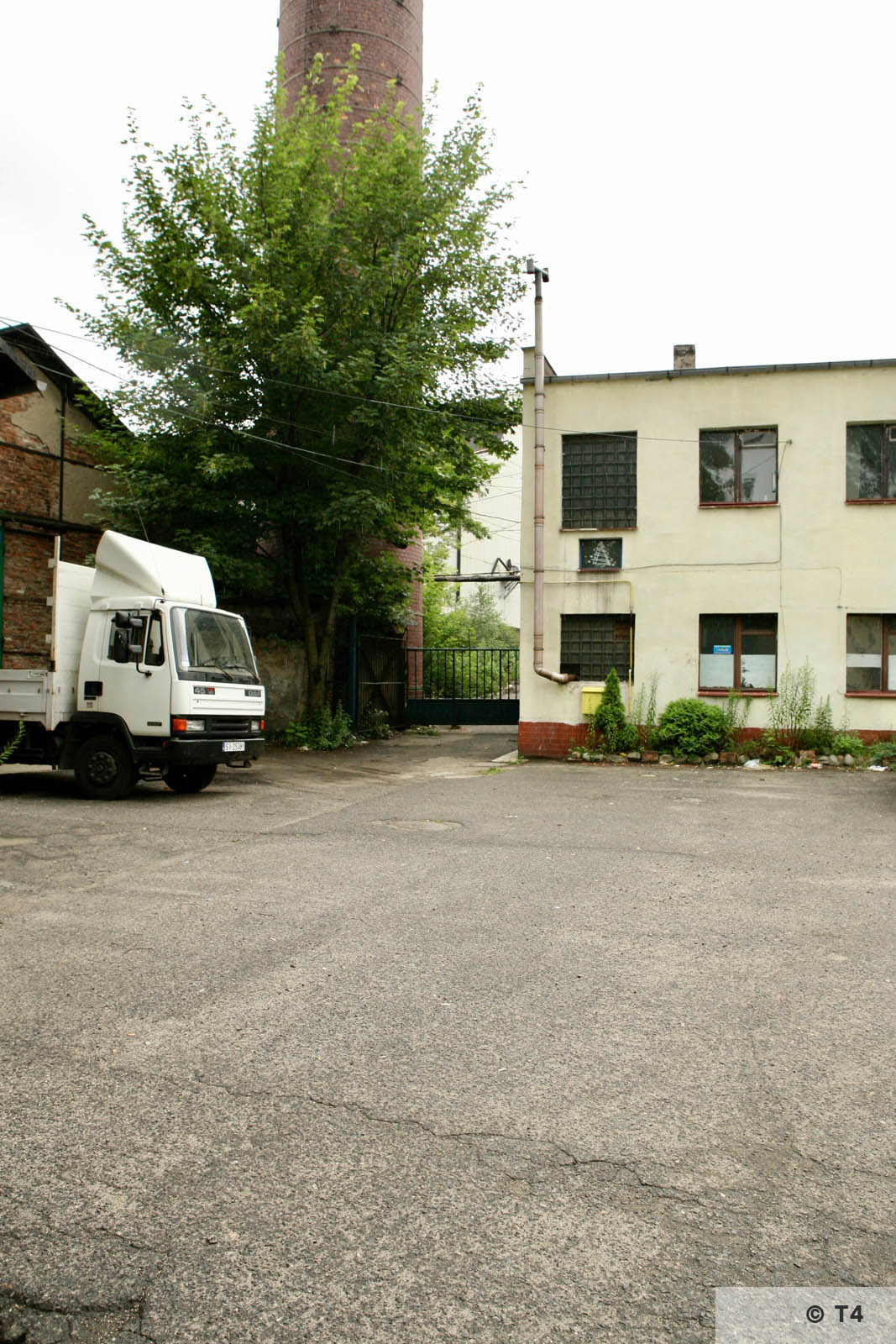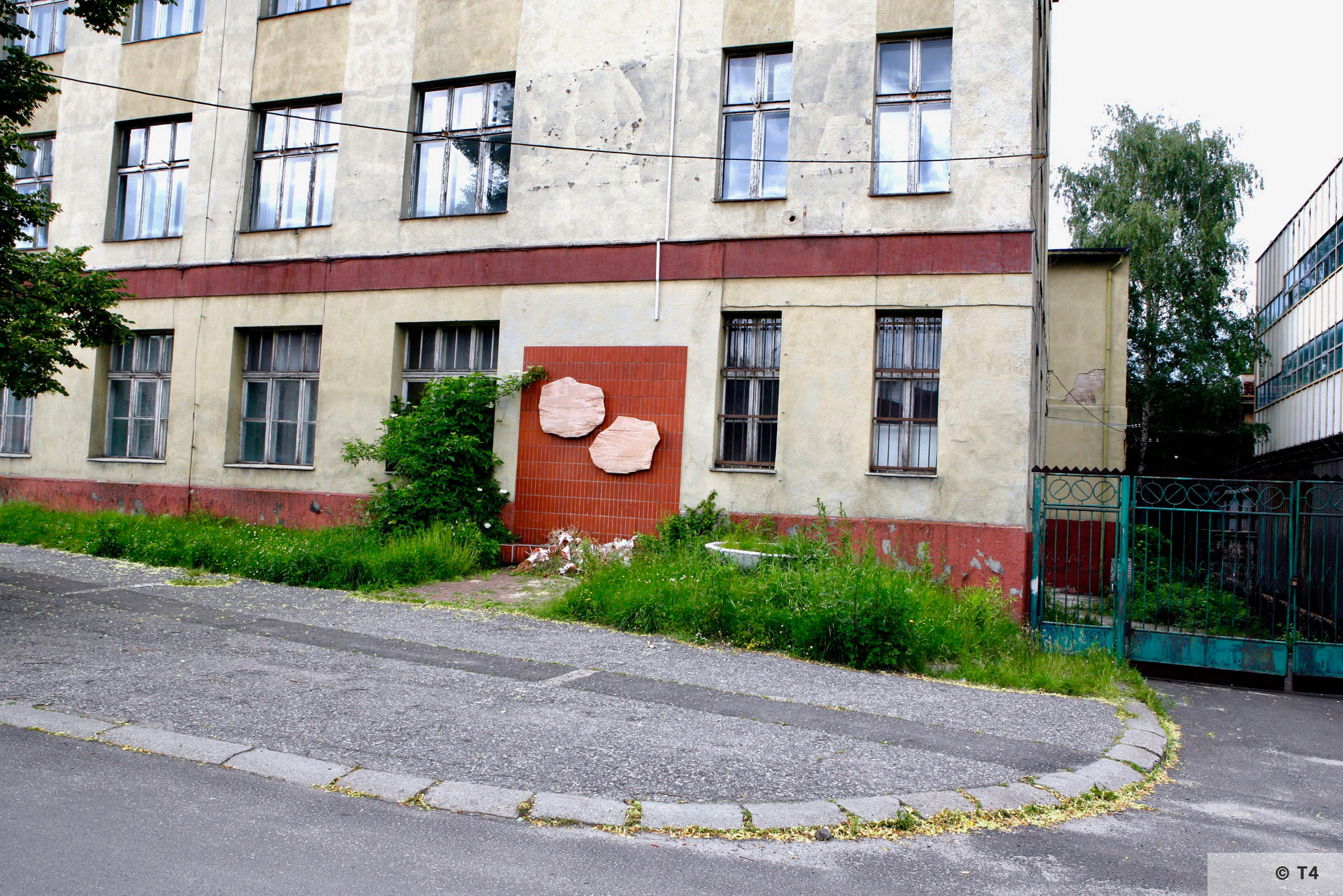Arbeitslager Laurahütte
Commandant of the camp
SS-Oberscharführer Walter Quakernack
Number of SS Guards
8 to 10 SS guards from the 5th Wachkompanie Monowitz and a Kommando of German marines numbering up to 40. Estimated total 50 guards.
Work type
Steel Works: Work at the Laura steel works in the production of anti-aircraft guns.
Employer
Rheinmetall-Borsig AG part of the Reichswerke Hermann Göring
Sub camp buildings
Some existing buildings of the steel plant were adapted for use by the sub camp. Some additional buildings were built for the sub camp.
Number of prisoners
937 male prisoners on 17 January 1945.
Nationality of prisoners
Mainly Jews from The Netherlands, Belgium, Poland, France, Czechoslovakia and Hungary.
Period of camp existence
April 1944 – January 23, 1945
Dissolution / Evacuation of the sub camp
On January 23, 1945 the prisoners were evacuated by train to Mauthausen concentration camp.
Dates of site visits by Tiergartenstrasse4 Association
June 2006, February 2007 and March 2007
Memorialisation
The Laurahütte sub camp has been commemorated with stone tablets located on the front wall of the administration building of the “Jedność” smelter at 27 ul Stycznia in Siemianowice Śląskie.
Explore more
The History
The history of the companies and the places prisoners worked, the sub camps, the SS guards and memorialisation of the sites.
The History of the Laura Steelwork
At the beginning of 1836, Hugo I Henckel von Donnersmarck and the Berlin Bank House of the Oppenfeld brothers decided to build a large ironworks in Siemianowice Śląskie. In the same year, the cornerstone was laid for the construction of the plant. The new steel mill was given the name “Laurahütte” (Huta Laura) – in honour of the wife of Hugo I.
Under the agreement of April 9, 1836, both sides were to bear the construction costs in half and share their profits in the same way. After 22 years, the Laura smelter was to become the full property of Henckel.[1] According to the project, it was to be a raw material mill with two blast furnaces, together with a furnace department, a rolling mill and auxiliary departments. From the moment of construction it was clear that it would be one of the most modern and the largest steel mills not only in Silesia, but throughout Germany. The total cost of construction was estimated at then then colossal sum of 350,000 thalers. [2] The first production of pig iron from the blast furnace took place in February 1839. Initially, the smelter had huge problems selling its products and Count Hugo I Henkel von Donnersmarck was even forced to take out loans so that the plant could continue to function. The reason for this was the strong competition from British steel mills, however, in 1842 when a ship with a load of English rail-tracks intended for the construction of the railway between Breslau and Myslowitz sank, the Upper Silesian Railway company ordered the rail-tracks from the Laura steel plant. Their excellent quality made the company famous around Europe and a number of the first European railways built in this period ordered tracks and track accessories from the steel works. (including Wilhelma Rail, Niederschlesische-Märkische Rail). In 1845, the plant received a gold medal for its products at the industrial exhibition in Berlin, and twenty years later the silver medal at the international exhibition in Paris.[3]
The steel mill was constantly expanded and modernized: two additional furnaces, a coking plant, an ore roaster, a lime kiln and a brickyard were built. At that time, a workers‘ housing estate was established around the steel mill, which took the name of the steel mill.
The smelter produced a very wide range of products such as pig iron, powder steel, marten steel, rods of various shapes, cooperage, angles, rail rails, thick sheet metal, thin sheet metal, barrels, buckets, gutters, hot-welded pipes with overlap and butt, and seamless pipes.
After the First World War parts of Upper Silesia became part of the Polish Republic. The Laura steel works became part of Górnośląskie Zjednoczone Huty “Królewska i Laura” Towarzystwo Górniczo-Hutnicze which owned the “Królewska” smelting works in Królewska, Huta Laura in Siemianowice Śląskie, and the Zgoda smelting works in Świętochłowice). [4]
Just before the outbreak of the Second World War there were four conglomerates in Poland including Wspólnota Interesów dla Katowickiej S.A. i Zjednoczonych Hut Królewska i Laura which owned: Huta Piłsudski (formerly Huta Królewska), Huta Laura, Huta Zgoda, Mechanical Workshops at the Huta Królewska. Factories manufacturing Fitzner screws and rivets in Siemianowice, Huty Bismarck, Huta Falva, Huta Silesia and Huta Hubertus. [5]
The huge machinery and industrial plant from the pre-war period, Huta Laura immediately aroused the interest of the Nazis after the seizure of Siemianowice Śląskie by the German Army in 1939. Rheinmetall Borsig AG took over the plant and reorganised it to manufacture anti-aircraft guns. [6]
On 13 April 1889, the metals and mining conglomerate Hoerder Bergwerks- und Hüttenverein, under General Director Joseph Massenez, founded “Rheinische Metallwaaren- und Maschinenfabrik Aktiengesellschaft” to supply munitions to the German Reich. Engineer Heinrich Ehrhardt, from Thuringia, established the factory in Düsseldorf and headed it until 1920. In 1919 the company switched over to non-military products (locomotives, steam ploughs, office equipment) because of the terms and conditions laid out in the Treaty of Versailles. In 1933 Rheinische Metallwaren- und Maschinenfabrik Aktiengesellschaft bought the locomotive manufacturer August Borsig GmbH as a future arms production plant in Berlin. In 1936 Rheinmetall and Borsig merged into Rheinmetall-Borsig AG. [7]
In 1941 Rheinmetall-Borsig AG was absorbed into the state-owned conglomerate Reichswerke Hermann Göring. [8]
[1] Kuzio, Arkadiusz, – Podrucki, Henkel von Donnersmarckowie. Kariera i fortuna rodu, Bytom 2003, p. 69.
[2] Kuzio, Arkadiusz,– Podrucki, Henkel von Donnersmarckowie. Kariera i fortuna rodu, Bytom 2003, p. 69.
[3] Kuzio, Arkadiusz, – Podrucki, Henkel von Donnersmarckowie. Kariera i fortuna rodu, Bytom 2003, p. 69.
[4] Jarosz-Nojszewska, Anna, Smelting Industry in the Second Republic http://kolegia.sgh.waw.pl/pl/KES/czasopisma/kwartalnik/Documents/AJN30.pdf. Viewed 15 August 2019.
[5] Jarosz-Nojszewska, Anna, Smelting Industry in the Second Republic http://kolegia.sgh.waw.pl/pl/KES/czasopisma/kwartalnik/Documents/AJN30.pdf. Viewed 15 August 2019.
[6] History of Rheinmettal Borsig AG company website. Viewed 10 August 2019 https://www.rheinmetall.com/en/rheinmetall_ag/group/corporate_history/2016_2017/index.php
[7] History of Rheinmettal Borsig AG company website. Viewed 10 August 2019 https://www.rheinmetall.com/en/rheinmetall_ag/group/corporate_history/2016_2017/index.php
[8] History of Rheinmettal Borsig AG company website. Viewed 10 August 2019 https://www.rheinmetall.com/en/rheinmetall_ag/group/corporate_history/2016_2017/index.php
The Post War History of the Jedność (Formerly Laura) Steel Works and Rheinmetall-Borsig AG
After 1945, raw material production was abandoned at the steel mill and it began to specialize in seamless steel pipes, which are still produced in a wide range to this day. In 1948, the name of the steel plant was changed to Huta Jedność. At the beginning of the 21st century the plant faced enormous problems, which first led to for example employees not being paid for months, and finally to mass layoffs. After going into bankruptcy Huta Jedność was transformed into a state-owned company, which however did not provide funds for the completion of an already advanced investment in a new steel rolling mill. The company eventually went into liquidation.
In 1945 the Allies implemented a production ban on arms production in Germany. In 1945 Rheinmetall-Borsig AG started production again of civilian products. Subsequently Rheinmetall-Borsig AG has expanded into communication technology, automotive engines as well as military products. [1]
[1] History of Rheinmettal Borsig AG company website. Viewed 10 August 2019. https://www.rheinmetall.com/en/rheinmetall_ag/group/corporate_history/2016_2017/index.php
The History of the Sub Camp Arbeitslager Laurahütte
The Laurahütte sub camp, was founded in late March or early April 1944. In the initial period of its operation some of the buildings of the steel mill, were adapted for the specific needs of the sub camp.
Prisoners were accommodated in two of the production halls of the steel works (map references 1 and 2). After the prisoners arrived in the sub camp additional buildings were built from concrete slabs, such as the kitchen (map reference 5), Schreibstube (map reference 5a), a prisoner hospital (map reference 3), and a new barrack for prisoners (map reference 4). Two buildings were added to the two factory halls. One is the detention block (map reference 11), while the other was a long, sloping roofed annex, for toilets and wash basins (map reference 2a). [1]
Within the camp, there were two gates – the main gate from the street and the gate leading from the sub camp area into the steel plant (map reference 14), through which prisoners went to work every day. The entrance gate from the street encompassed two quite large guard rooms with a semi-circular shape. The pillars on which the main gate was mounted were bricked up to adjacent buildings. The main gate was a steel door through one of the oval shaped guard buildings. The second gate (map reference 14), through which the prisoners marched into the steel works, was located between a brick barrack, the Schreibstube (map reference 5a) and the chimney (map reference 13).[2]
A wooden barrack (map reference 7) served as the accommodation of the guards and also the office of the Lagerführer. A camp prison (map reference 11) was also erected in front of the prisoner accommodation (map reference 1). [3]
The food received by the prisoners in the camp kitchen was better than in most Auschwitz camps. There was also a prisoner canteen, however the prisoners could not buy what they really needed, extra food. Families of prisoners could also send food parcels and letters to Auschwitz III-Monowitz which were forwarded onto the sub camp Laurahütte. However these provisions only related to German and Polish prisoners. Jewish prisoners had no right to receive or send letters. [4]
The prisoners in the Laurahütte sub camp were mainly Jews from The Netherlands, Belgium, France and Hungary.[5]
A hospital was erected in Laurahütte. Periodic selections were made of ill prisoners by a commission from Auschwitz made up of a doctor and higher SS officials, and the selected prisoners were transported back to Auschwitz where they were probably murdered. [6] The death rate in the Laurahütte sub camp was initially 40 prisoners per month but was later reduced to 10 per month. [7]
Adler a former prisoner witnessed the hanging of attempted escapees, “During my internment in the camp of Laurahütte I was an eyewitness to the hanging of two of my fellow prisoners. It happened in October or November (1944); all prisoners were collected together on the roll call area and in the middle of the area there were two gallows. The Lagerschreiber, whose name I cannot remember read out the judgement and a Blockältester, named Zeppel carried out the hangings. We had to march around the gallows and look upon the hanged (men). The victims were two young Russian prisoners. They were accused of attempting to escape.” [8]
The prisoners worked at adapting the buildings of the sub camp and also in the steel works. Most of the prisoners worked in the production halls 12 hours a day manufacturing coastal defence guns. Initially there was only a day shift but later night shifts were added. Prisoners were overseen at work by civilian overseers and prisoner Kapos.
[1] Iwaszko, Tadeusz, Das Nebenlager Laurahütte, [in:] Hefte von Auschwitz [1970] Nr 10.
[2] Iwaszko, Tadeusz, Das Nebenlager Laurahütte, [in:] Hefte von Auschwitz [1970] Nr 10.
[3] Iwaszko, Tadeusz, Das Nebenlager Laurahütte, [in:] Hefte von Auschwitz [1970] Nr 10.
[4] Iwaszko, Tadeusz, Das Nebenlager Laurahütte, [in:] Hefte von Auschwitz [1970] Nr 10.
[5] StA Hannover. ha_nds._721_hannover_acc._90_99_nr._181, p. 6.
[6] StA Hannover. ha_nds._721_hannover_acc._90_99_nr._181, p. 265. Witnesses David van Geuns and Jakob Goldberg.
[7] Iwaszko, Tadeusz, Das Nebenlager Laurahütte, [in:] Hefte von Auschwitz [1970] Nr 10.
[8] StA Hannover. ha_nds._721_hannover_acc._90_99_nr._181, p. 11.
Literature:
Iwaszko, Tadeusz, Das Nebenlager Laurahütte, [in:] Hefte von Auschwitz [1970] Nr 10, p. 145-159.
The SS Guard Unit
The Lagerführer from the opening of the sub camp until its evacuation was SS-Oberscharführer Walter Quakernack. His deputy was SS-Rottenführer Kramm and the Arbeitsdienstführer was SS-Oberscharführer Otto Bernhard.
Reinhard Karger a former soldier in the German navy and of the guard unit in the sub camp Laurahütte testified, “ From our unit a Kommando was put together and sent to Laurahütte in March. Most members of this Kommando were old marines. I estimate the strength of this Marinekommando at 15 to 25 men, nearer 15. In Laurahütte we were placed under a captain of the army…… We had the task to guard the factory area, and the accesses to it. Likewise we did guard duty at the gate to the prisoner camp, and around the prisoner camp. The prisoners of the camp were sent to work in the already described factory. At work the prisoners were guarded by the SS. SS men went with the Arbeitskommandos into the factory. None of the marines did guard duty in the factory….. From memory there were 8 to 10 SS men in the SS guard unit….Amongst the SS men 3 or 4 were Volksdeutsche.”[1] The number of men from the marines in the guard unit from another source is given as 40 and was led by Petty Officer Adamczyk from Silesia.[2]
[1] StA Hannover. ha_nds._721_hannover_acc._90_99_nr._204, p. 42. Testimony of Reinhard Karger.
[2] Iwaszko, Tadeusz, Das Nebenlager Laurahütte, [in:] Hefte von Auschwitz [1970] Nr 10.
Literature:
Iwaszko, Tadeusz, Das Nebenlager Laurahütte, [in:] Hefte von Auschwitz [1970] Nr 10, p. 145-159.
The SS Guards
References:
StA Hannover, ha_nds._721_hannover_acc._90_99_nr._181, p. 4-6.
Zppw-auschwitz.pl Zwiazek Polaków Pomordowanych w Auschwitz. List of 8,500 SS men in KL Auschwitz.
BA Ludwigsburg B162/2680 and B162/2679.
IPN database of Auschwitz SS guards. https://truthaboutcamps.eu/th/form/60,Zaloga-SS-KL-Auschwitz.html.
Iwaszko, Tadeusz, Das Nebenlager Laurahütte, [in:] Hefte von Auschwitz [1970] Nr 10, p 145-159.
Tadeusz Iwaszko, Podobóz Laurahütte, [in:] Zeszyty Oświęcimskie [1967] Nr 10, p. 101-115.
The Evacuation of the Sub Camp Arbeitslager Laurahütte
The evacuation of the sub camp Laurahütte began on 23 January 1945. The prisoners were loaded onto rail wagons brought to the railway ramp at the steel works. This transport also included all of the civilian workers from the Laura Steel Plant. The total number of prisoners on 17 January 1945 was 937 and no prisoners sick or otherwise were left in the sub camp on evacuation.
The evacuation was led by the Lagerführer, SS-Oberscharführer Walter Quakernack. The SS guard and the Marine guard unit accompanied the prisoners. [1]
The train halted in a forest near the train station in Rzędówka where the prisoners from the train were ordered to get off the train to collect the scattered bodies of prisoners and their belongings in the forest and load them onto the train. Probably these were dead prisoners from a previous transport from the Auschwitz sub camp Eintrachthütte.
From Rzędówka the train continued through Katowice, Mährisch-Ostrau and Vienna and after five days arrived at Mauthausen-Gusen concentration camp. 134 prisoners had died en-route. Some of the prisoners remained in the Mauthaausen-Gusen concentration camp, others were assigned to the Neuengamme concentration camp sub camp of Hannover-Linden. [2] [3]
[1] StA Hannover. ha_nds._721_hannover_acc._90_99_nr._204, p. 46. Testimony of Testimony of Reinhard Karger.
[2] APMAB – Zespół Oświadczenia, Tadeusz Iwaszko, Das Nebenlager Laurahütte, [in:] Hefte von Auschwitz [1967] Nr 10, p. 101.
[3] StA Hannover. ha_nds._721_hannover_acc._90_99_nr._204, p. 46. Testimony of Testimony of Reinhard Karger.
Literature:
Iwaszko, Tadeusz, Das Nebenlager Laurahütte, [in:] Hefte von Auschwitz [1970] Nr 10, p 145-159.
The Post War History of the Former Sub Camp Arbeitslager Laurahütte
After the end of the war the buildings of the former sub camp were appropriated by the Huta Jedność.
The Preservation Status of the Former Sub Camp Arbeitslager Laurahütte
The Laurahütte sub camp was located in the Laura steel works (now Huta “Jedność” – in bankruptcy) in Siemianowice Śląskie. The sub camp was located at the extreme northern corner of the steelworks, between ul Sienkiewicza and ul Głowackiego. All of the sub camp buildings both for prisoners and camp guards were located within the area of the steelworks.
The Laurahütte sub camp took the form of a rectangle and this arrangement is still visible. From the north and west, the sub camp was surrounded by a solid three-meter wall, topped with barbed wire. The wall has survived. It has the form of stone posts connected by a brick wall. On the top of the walls were metal brackets on which barbed wire was hung. This part of the sub camp fencing has not survived. Factory buildings enclosed the sub camp from the south and east.
Within the camp, there were two gates – the main gate from ul Sienkiewicza and the gate leading from the sub camp area into the steel plant (map reference 14), through which prisoners went to work every day. The entrance gate from ul Sienkiewicza which encompassed two quite large guard rooms with a semi-circular shape are original. The pillars on which the main gate was mounted are bricked up to adjacent buildings. The gates seen during the site visit are not original and come from the post-war period. The main gate was a steel door through one of the oval shaped guard buildings. This element can be observed to this day. The second gate (map reference 14), through which the prisoners were marched into the steel works, was located between a brick barrack, the Schreibstube (map reference 5a) and the chimney (map reference 13). Today, there is also a gate here, this is not the original from the time of the sub camp. Perhaps an original part is the lamp mounted on the chimney which illuminates the gate area.
To the right of the main entrance are the two factory workshops (map references 1, 2) where the prisoners lived. The Laurahütte sub camp, which was founded in late March or early April 1944, in the initial period of its operation used the existing infrastructure of the steel mill, adapted for the specific needs of the camp. It was only after the prisoners arrived in the sub camp that additional buildings were built from concrete slabs, such as the kitchen (map reference 5), Schreibstube (map reference 5a), a prisoner hospital which no longer exists (map reference 3), and a new barrack for prisoners (map reference 4). Two buildings were added to the two factory halls that have survived to this day. One is the detention block (map reference 11), while the other is a long, sloping roofed annex, for toilets and wash basins (map reference 2a).
The building which functioned as the kitchen (5) and a Schreibstube (5a). (today a multi-storey superstructure) has survived. On the north wall of this building you can clearly see that it was originally a one-story brick barrack. Opposite this building there is a brick barrack with workshops. It is located exactly in the place where the construction of a new, brick prisoner barrack was begun (map reference 4). This building was never completed during the operation of the Laurahütte sub camp. This facility was completed after the war, probably using the foundations prepared during the operation of the sub camp.
The former sub camp warehouses (map reference 6) and production halls (map reference 15) in which prisoners worked have been preserved virtually unchanged.
Memorialisation
The Laurahütte sub camp has been commemorated with stone tablets placed on the front wall of the administration building of the “Jedność” smelter at 27 ul Stycznia in Siemianowice Śląskie. The tablets are made of light stone placed on a solid red background of clinker as a reference to the Polish national colours. The first of the tablets is carved in the shape of Poland. It commemorates the Poles murdered by the Nazis, as evidenced by the inscription: “FOR ETERNAL GLORY, POLISH PATRIOTS” (MURDERED IN THIS PLACE BY THE HITLERITES IN 1939-1944.) Next to the inscription, the Polish national emblem is carved – a white eagle with outstretched wings. The second plaque with an irregular shape is specifically dedicated to the martyrdom of prisoners of the KL Auschwitz sub-camp: “DLA UPAMIĘTNIENIA MĘCZEŃSTWA WIĘŹNIÓW PODOBOZU OŚWIĘCIMSKIEGO “LAURAHÜTTE” ISTNIEJĄCEGO NA TERENIE HUTY W LATACH 1944-1945.” (To commemorate the Martyrdom of the Prisoners of the Auschwitz sub camp “LAURAHÜTTE” LOCATED IN THE HUTA IN THE YEARS 1944-1945.) Next to the inscription, is the symbol of the Rada Pamięci Walk i Męczeństwa (The Council for the Protection of Struggle and Martyrdom Sites).
Rheinmetall Borsig AG which employed the prisoners of the sub camp Laurahütte present a short history of the company on their website including a section on the years 1936 to 1945: “In 1943 the German Army was engaged in fierce combat on the Eastern and Western Front. Numerous Rheinmetall-Borsig AG employees had been conscripted and many had already lost their lives on the battlefield. Women and forced labourers had taken their place in arms production. However, something that still functioned perfectly in spite of all the hardship was the German bureaucracy. Even the weapons production needed for the much hoped for Final Victory (Endsieg) was slowed down by abundant red tape. This applied both to the recruitment of labour – even of forced labourers – and to the relocation of factories. When the Allies started their day and night-time air raids of major cities like Berlin and Düsseldorf damaging residential buildings and production facilities alike, Rheinmetall-Borsig’s plant management tried to relocate production of the 8.8cm anti-aircraft gun and other important guns to requisitioned property in the allegedly safer eastern regions of the German Reich. On several occasions, this was prevented by red tape. However, the administrators of German thoroughness that survived even in times of war often had no other choice. Only thus was it possible to stop big companies from securing large factory halls to get access to cheap labour and facilities.” [1]
The history on the website then goes onto to provide some light-hearted stories on the use of forced labourers. There is however no mention of the Auschwitz sub camp Arbeitslager Laurahütte.
[1] History of Rheinmettal Borsig AG company website. Viewed 10 August 2019 https://www.rheinmetall.com/en/rheinmetall_ag/group/corporate_history/2016_2017/index.php
Auschwitz-Birkenau State Museum Site Visit
The Auschwitz-Birkenau State Museum visited the site of the former sub camp Laurahütte in 1963 and took 17 photographs including:
- “Barrack of the kitchen and Schreibstube.” (photograph reference 4646),
- “Hospital barrack.” (photograph reference 4641),
- “Garages originally the unfinished barrack for prisoners.” (photograph reference 4642),
- “Storehouse and place for disinfection.” (photograph reference 4647),
- “Fragment of the annexe of the arrest bunker.” (photograph reference 4650),
- “Brick building where the prisoners lived ” (photograph reference 4637),
- “Main gate between the sub camp and steel work” (photograph reference 4651).




